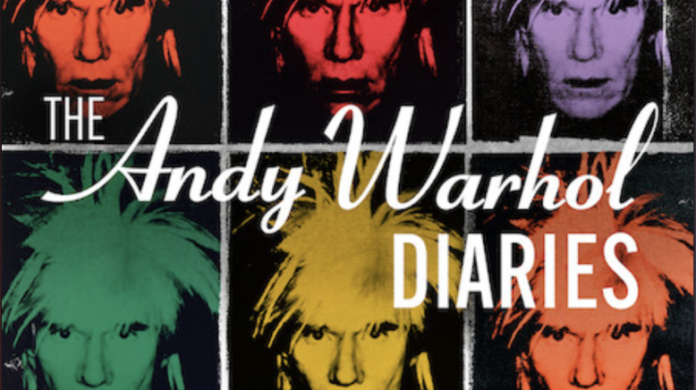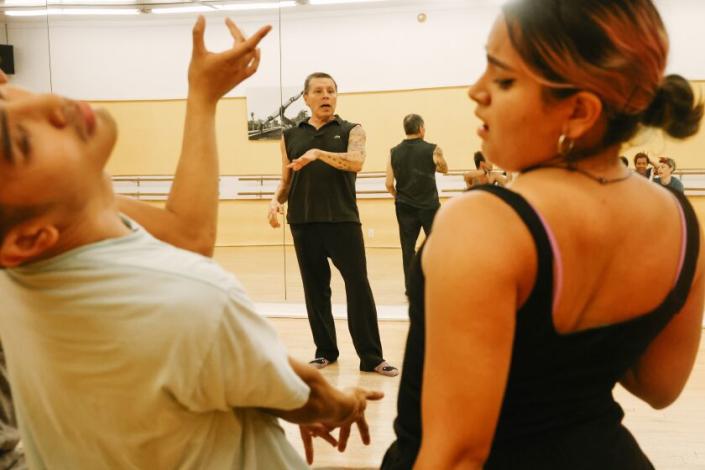In the mid-1970s Andy Warhol began keeping a diary–of sorts. It started out as a dry accounting of expenses–a tube of paint here, a quart of milk there—dictated to his collaborator Pat Hackett. But over time the entries shifted from the strictly mundane to something deeper and more personal.
“I’ve got these desperate feelings,” he noted in a 1981 entry, for instance, “that nothing means anything.”
Andy Warhol’s diaries were published posthumously in 1989, Hackett having edited the raw 20,000 pages to a more manageable, if not inconsiderable, 807. But it was not until this year that The Andy Warhol Diaries were transformed into a documentary series for Netflix, and an acclaimed one at that. It has earned four Emmy nominations, including Outstanding Documentary or Nonfiction Series and individual recognition for Andrew Rossi for writing and directing the series.

“The diaries when they were published were seen as scandalous because of all of the gossip,” Rossi tells Deadline. “But of course, it’s those statements that he makes about himself that are the most revealing and fascinating.”
The candor of the diaries allows Rossi to completely reframe our understanding of the artist and the person. They shatter the public image—which Warhol himself deliberately created—of a wan figure, almost expressionless, de-sexed and bloodless. The uncensored record Warhol left behind reveals that far from being a passionless ghost, it turns out his veins coursed with corpuscles after all.
“In the diaries his lust is very palpable,” Rossi says. “This is not a man who just was closing that side of his life off. He just had a lot of difficulty accessing it.”

There were many reasons for that, as the series explores. Warhol, born in 1928, grew up in a time when homosexuality was condemned as deviant. The Byzantine Catholic Church he attended as a youth in Pittsburgh would not have encouraged him to accept his sexual identity. What’s more, as a kid Warhol was teased about his appearance and he came to view himself as physically unattractive and undesirable.
“What comes through in his personal story–which is what I really tried to adapt the diaries to bring to the foreground–is his sense of shame with the way he looked, and his queerness,” Rossi says, “and how he never felt he could be loved, and felt an outsider, that he was so awkward he would never be able to fully fit in.”
He found a way to fit in by building his own scene in New York with The Factory, a meeting point for artists, musicians, personalities and underground cinematic “superstars.”
“Andy allowed people to be who they wanted to be,” Rossi says. “That’s very much what we think about with the 1960s Factory and the characters that were there that he put into several films like Couch and others.”

In contrast to the image of Warhol as eunuch, Rossi highlights two important romantic relationships in the artist’s life, both with carnal dimensions. The last of them was with Jon Gould, a closeted executive at Paramount Pictures. Before that, Warhol became attached to Jed Johnson, a handsome young man who started off sweeping floors at The Factory and later edited some of Warhol’s films. Warhol and Johnson were coupled for over a decade, and it was not a sexless union. “Andy shared a bed with Jed Johnson,” Rossi states.
In public, Warhol muted his sexuality and encouraged interviewers to perceive him as asexual. He may have done that partly to preserve his commercial viability as an artist–always a primary concern with him–in that homophobic era. But the docuseries points to a second phase of Warhol’s life, when he became increasingly adventurous, and made more frankly homoerotic art. This coincided with new individuals taking up residence at The Factory, like the sexually uninhibited gay model-artist Victor Hugo.
“What’s fascinating is there’s a whole other evolution of The Factory and Andy’s engagement with the people who he helped to convene that takes place in the late ‘70s and 1980s. And that’s what the series is really focused on,” Rossi explains. “And in that version of The Factory, Andy is much more open with his sexuality, and it transforms everything to view him as a gay man collaborating with Victor Hugo to bring [male] models to the factory, to photograph them for the Sex Parts Polaroids, who then become the subjects of the Torso paintings.”
Rossi adds, “This is an example of how in investigating his personal side, which the diaries gives us a window into, Warhol goes from being ‘the man in the corner’ that is sort of perhaps manipulating people to more of a participant in the later years. And that’s what I was hoping to do, was to humanize him and take him out of that iconic shell.”

In the six-part series, Warhol reads from his own diaries. Or rather, a simulated version of Warhol does (if any actual Warhol diary recordings remain extent, they haven’t been revealed).
“I contacted Resemble AI, an artificial intelligence company that does voice cloning. And they were able to create an algorithm that allowed for me to insert the text of the diary and to sketch out scenes based on that algorithm,” Rossi says. “But then that was still a little bit stiff. And so it was helpful to have [actor] Bill Irwin read [the words] beautifully and then Resemble AI combined both of those audio sources to create an interpolated model.”
Rossi is transparent with viewers about what he’s doing. A card at the beginning of The Andy Warhol Diaries states, “Andy’s voice in the series is recreated using an AI program with the Andy Warhol Foundation’s permission.” Furthermore, this all seems perfectly consistent with Warhol’s preoccupations.
“Andy’s whole artistic practice was based on the mechanical, in that he said he wanted to be a machine because they have less feelings,” Rossi notes. “He had himself made into a robot [in 1982], into a hologram as well. He had someone impersonate him and go on a college tour in the 1960s, on his behalf. And so, I felt that in making a documentary about an artistic figure who did so much to invent new forms of visual expression, that it would be a great goal to make the piece as much a work of art as it is a work of documentary and historical storytelling. The AI voice is bringing us closer to Andy emotionally.”
In May, one of Warhol’s Marilyn Monroe silkscreens, “Shot Sage Blue Marilyn,” sold at auction for $195 million, reportedly the highest price ever paid for an American work of art. That provides more evidence, if any were needed, of how central Warhol remains to the culture. The Marilyns, Jackie Kennedys, and Elvises constitute his best-known work among the general public, but Rossi feels Warhol’s identity as a both a gay man and a creator of specifically homoerotic works must be appreciated.
“The later work is not part of the canon,” Rossi points out. “The Sex Parts Polaroids and prints are frequently in the back of the gallery. And [curator] Jessica Beck talks about that, that it’s hurting the art history to not sort of reckon with his real identity.”
Rossi finds it significant that the docuseries has been embraced by Emmy voters, given the current political climate in the U.S.
“It’s meaningful, especially at a time when so many efforts are being advanced, particularly in state legislatures, to pull back on LGBTQ rights,” he says, adding that the Emmy recognition also “validates the relationships Andy had with Jed Johnson and Jon Gould, who in many ways have been erased from the record, from the official story… This feels like it is almost an official stamp that, yes, these stories are valid.”








